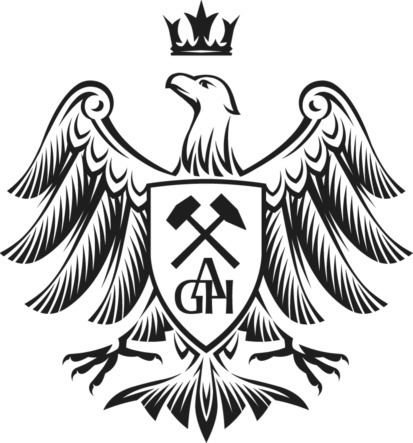Type Public Academic staff 1,964 (30 Nov 2014) Total enrollment 34,248 (30 Nov 2011) Founded 1919 | Established 1919 (1919) Administrative staff 4,233 (30 Nov 2014) Phone +48 12 617 22 22 Colors Black, Green, Red | |
 | ||
Motto in English "Born in labour, I serve the labour and science" Rector Professor Tadeusz Słomka Address aleja Adama Mickiewicza 30, 30-059 Kraków, Poland Undergraduate tuition and fees International tuition: 6,556 EUR (2011) Motto "Labore creata, labori et scientiae servio" ("Born in labour, I serve the labour and science", la) Notable alumni Marcin Miller, Mariusz Ziółko, Aleksander Grad, Wiktor Zin, Andrzej Czerwiński Similar Jagiellonian University, Kraków University of Econo, Tadeusz Kościuszko University, Pedagogical University of Kraków, Agricultural University of Kraków Profiles | ||
tv agh agh university of science and technology
AGH University of Science and Technology (Polish Akademia Górniczo-Hutnicza im. Stanisława Staszica) is the technical university in Poland, located in Kraków. The university was established in 1919, and was formerly known as the University of Mining and Metallurgy. It has 15 faculties and one school, which will become a faculty in the near future.
Contents
- tv agh agh university of science and technology
- History
- Faculties
- Rankings
- AGH people described in Wikipedia
- References
tv agh agh university of science and technology
History
At the conference of the Polish miners and metallurgists held in Kraków on 24 February 1912, a resolution was passed indicating the need for the university of mining. A campaign of support was started in the Parliament of Austria-Hungary. The Ministry of Public Works agreed to the founding of the Academy in 1912, in April 1913 the Organizing Committee was appointed and on 31 May 1913 the Academy of Mining was officially established. The building site was chosen and the competition for the architectural designs announced.
The Academy opened on 1 October 1919 in the sovereign Polish Second Republic. Initially 80 students began their education at the newly formed Faculty. The Faculty of Metallurgy was added in 1922. In 1939 the Academy had approximately 600 students and 30 professors.
Between 1919 and 1939 a total of 797 mining and metallurgy engineers graduated from the Academy, and about 100 foreign diplomas were officially recognized. The graduates took up senior posts in the Polish industry, particularly in Upper Silesia and other industrial centres.
At the onset of World War II, during Operation Sonderaktion Krakau, 22 Academy professors and assistant professors were arrested by the Nazis and sent to the Sachsenhausen concentration camp. The main building was used by the German government of the occupied Polish territory. Part of the Academy however, retained its status and became the centre for underground teaching, vital for the Academy's future.
After the war, a group of professors, staff members and students reclaimed the ruined main building of the Academy and more than 500 students began their courses. In 1946 new faculties were opened: the Faculty of Geology and Surveying, and the Faculty of Ceramics, broadening the Academy's programme. In 1949 the Academy was renamed as the Academy (later University) of Mining and Metallurgy.
Under Stalinism and until 1956 the Academy enjoyed certain freedoms with its authorities still elected. Afterwards, the autonomy and elections were suspended for more than 10 years. In 1969 the university was named the Stanisław Staszic Academy of Mining and Metallurgy. The number of students went up from 2,000 to 13,000 in the period from 1950 to 1979.
During the 80-year period (except for the war years), 73,085 students graduated from the University with master's or engineer's degrees. 3,607 persons were granted the degree of Doctor of Science, 896 successfully completed postdoctoral qualifications of Habilitated Doctor. The AGH-UST researchers published nearly 60,000 papers and books.
Faculties
Rankings
In the most recognised Polish university ranking conducted by Rzeczpospolita and educational magazine Perspektywy in 2008, AGH was selected as the eighth best university in Poland and the third best technical one.
In a survey conducted by the Polish edition of Newsweek in 2007, AGH University of Science and Technology was selected as the third best technical university in Poland and the fourth best among all Polish universities.
The ambition of the University is to enable its students to gain knowledge at the mean level, recognized in Poland. For this purpose, the following steps have been introduced: intensified learning of foreign languages, integrated studies with a double diploma (AGH and a university abroad), a possibility of holding practical training abroad, and individual tailoring of syllabuses. -->
